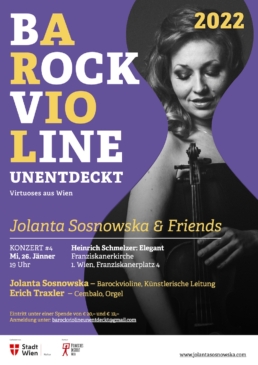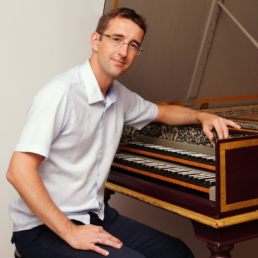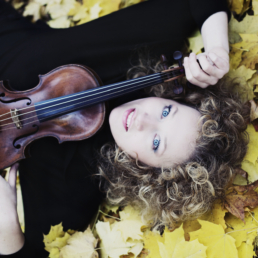Concert #4 | ELEGANT SCHMELZER
Jolanta Sosnowska – Baroque Violin, Direction
Erich Traxler – Harpsichord
Jan 26th, 2022 | 7.00 pm
Franciscan Chruch, Franziskanerplatz 4 1010 Vienna Austria

Programm
Heinrich Schmelzer (1686-1768)
UNARUM FIDIUM, Norimbergæ 1664: | Sonata IV
Heinrich Schmelzer
UNARUM FIDIUM: | Sonata II
Kaiser Leopold I (1640-1705)
Balleti:
Seconda Aria in D
Allemande/Sarabanda/Gigue/Gavotte/Courante/Sarabande/Gagliarda/Canario
Johann Kaspar Kerll (1627-1693)
Toccata in C *
Johann Jakob Froberger (1616-1667)
Libro Quarto: | Capriccio in g*
Johann Kaspar Kerll:
Passacaglia in d *
Heinrich Schmelzer
Sonata in d from the Archives of British Library
Heinrich Schmelzer
aus der Sammlung UNARUM FIDIUM: | Sonata III
Heinrich Schmelzer
aus der Sammlung Musica Leopoldina: | Ciaccona
While the experimental world of the early-baroque violin wrought selected gems (one thinks of the best of Marini and Uccellini), there is a new dimension to the next generation and, in particular, the music of Johann Heinrich Schmelzer. Schmelzer was the first home-grown Kapellmeister to be appointed at the Hapsburg Court in Vienna in 1679 (though his influence as Vice-Kapellmeister from 1671 was arguably more telling as he consolidated on his successes of the previous decade), following generations of Italians hired for their oltremontani flair and easy command of prevailing fashion. With Schmelzer’s arrival came a new indigenous ambition and flightiness, tempered by a degree of German-speaking propriety and effected by his ability to distil Italian rhetorical brilliance – and excess – into a sonata ‘principle’ which amounted to rather more than dozens of unrelated, improvisatory incipits. These six sonatas from 1664 are certainly Italianate, and not without freewheeling virtuosity, but they contain a type of extended lyricism also, and, as in the opening of the Fourth Sonata, a sense of no-nonsense progression of comforting expectation. In fact, this work, and that by his dynamic forebear, Antonio Bertali (whose own Chiaconna is quite a party-piece) are typical seventeenth-century showcases for the violin where intricate and fantastical divisions unfold above a recurring bass pattern.
This concert holds another secret. Behind the high altar which takes the form of a triumphal arch one can find (and listen to) the oldest organ in Vienna. Built in 1642, the organ is a technological and artistic marvel. Recently restored, after 350 years of utilization, surviving wars and revolutions, it still preserves 90% of its original components. You will hear some impressive organ solo during the cocnert performance.


